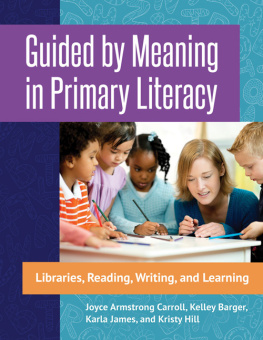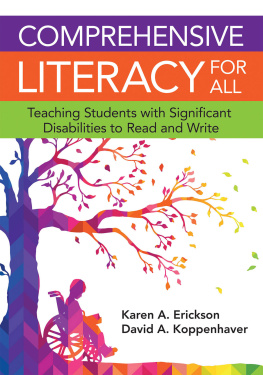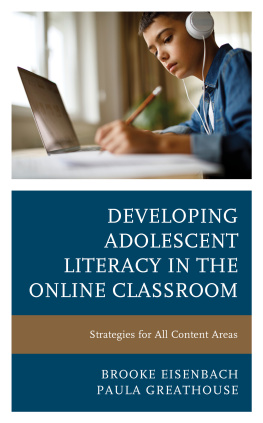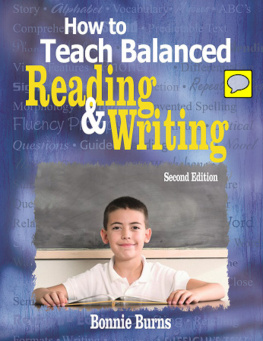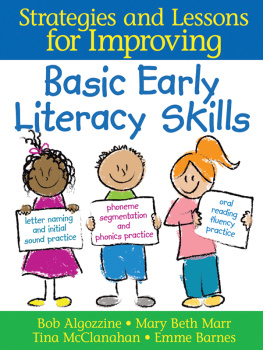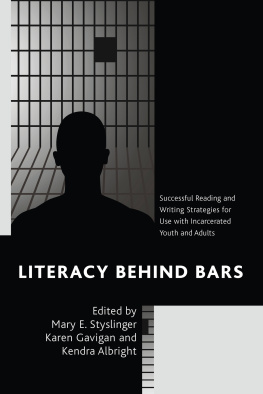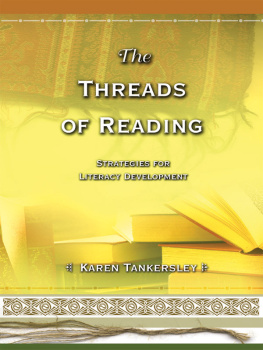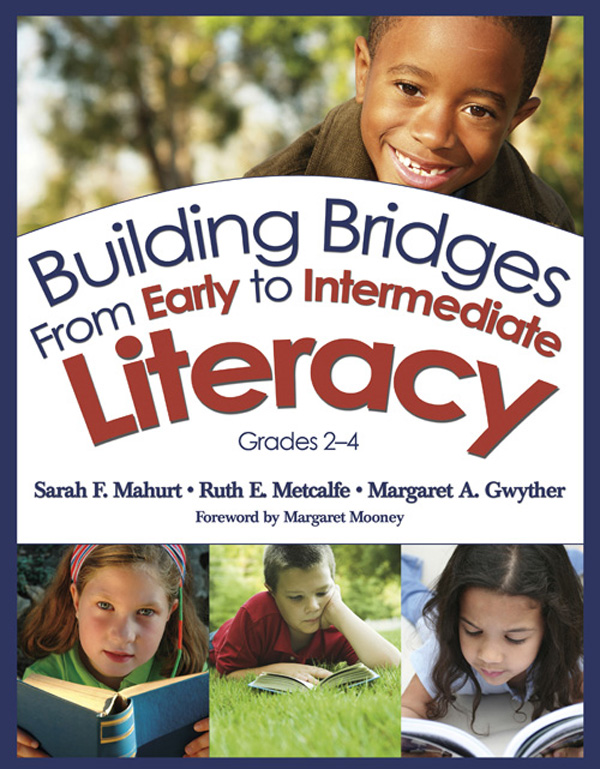We dedicate this book to our families and friends whose support and belief in us were an important part of this work.

Copyright 2007 by Corwin Press
All rights reserved. When forms and sample documents are included, their use is authorized only by educators, local school sites, and/or noncommercial or nonprofit entities who have purchased the book. Except for that usage, no part of this book may be reproduced or utilized in any form or by any means, electronic or mechanical, including photocopying, recording, or by any information storage and retrieval system, without permission in writing from the publisher.

For information:

Corwin Press
A Sage Publications Company
2455 Teller Road
Thousand Oaks, California 91320
www.corwinpress.com
Sage Publications Ltd.
1 Olivers Yard
55 City Road
London, EC1Y 1SP
United Kingdom
SAGE Publications India Pvt. Ltd.
B 1/I 1 Mohan Cooperative Industrial Area
Mathura Road, New Delhi 110 044
India
SAGE Publications Asia-Pacific Pte. Ltd.
33 Pekin Street #02-01
Far East Square
Singapore 048763
Printed in the United States of America
Library of Congress Cataloging-in-Publication Data
Mahurt, Sarah F.
Building bridges from early to intermediate literacy, grades 24/
Sarah F. Mahurt, Ruth E. Metcalfe, and Margaret A. Gwyther.
p. cm.
Includes bibliographical references and index.
ISBN 978-1-4129-4962-0 (cloth)
ISBN 978-1-4129-4963-7 (pbk.)
1. Language arts (Primary) 2. English languageComposition and exercisesStudy and teaching (Primary) 3. Active learning. I. Metcalfe, Ruth E.
II. Gwyther, Margaret A. III. Title.
LB1528.M284 2007
372.6dc22 2007002113
This book is printed on acid-free paper.
07 08 09 10 11 10 9 8 7 6 5 4 3 2 1

| Acquisitions Editor: | Cathy Hernandez |
| Editorial Assistants: | Jordan Barbakow |
| Megan Bedell |
| Production Editor: | Beth A. Bernstein |
| Copy Editor: | Carla Freeman |
| Typesetter: | C&M Digitals (P) Ltd. |
| Proofreader: | Dennis W. Webb |
| Indexer: | Karen McKenzie |
| Cover Designer: | Lisa Miller |


REFLECTIONS OF A READER
A good book is a good book! A good book confirms as well as extends ones understandings about a topic, a theme, and an issue. A good book engenders and supports comprehension at literal, inferential, and analytical levels. A good book tells (literal); it causes thought beyond the stated (inferential); and it leads to an awareness of new understandings, to a decision, or to action (analytical). The clarity of text and content in Building Bridges From Early to Intermediate Literacy, Grades 24, eased and enhanced my understandings at all three levels. And in doing so, it caused me to reflect on bridges built and safely crossed in recent years.
Recent surges in research, accountability, and legislation have established both the need and a blueprint for bridges between the old and new, the extremities of methods, and the divisive organizations within schools. The subsequent revitalized professional development opportunities highlight both the privileges and responsibilities of teaching literacy. And it is those opportunities and responsibilities that this book celebrates.
As a good book is a good book, so is a good teacher a good teacher! Building Bridges From Early to Intermediate Literacy, Grades 24, claims to focus on the in-between years, and at a literal level, it does a fine job of guiding the building of an intentional and balanced research-based literacy program for students in the in-between phase, straddling the acquisition and application of skills confidently and competently.
At an inferential level, the reading becomes more personal, provoking consideration of implications. As I became absorbed in the reading, my thinking moved from specific grades to an appreciation of a teachers role in a students continuous journey as a literate learner. The focus on the in-between years provided the range and depth of consideration, but the structure and areas of consideration provide a framework for every level. It is not what a teacher does at any level that supports literacy development, but how a teacher builds bridges from what is in place to what is to come that makes a good teacher into an even better one.
As I completed my first reading of the manuscript, I realized that my conversation with and through the text had been as if I were in the classrooms described in the book and the authors were in the classrooms in which I work. Our evaluative conversation had clearly identified action I needed to take, so my second reading was more selective and analytical. The three levels of comprehension I had experienced as I read the book were exactly those through which a good teacher prompts and guides his or her students from dependence to independence.
So, acknowledging the role of a foreword in preparing the readers for what is to come, or, more important, for the conversation they might have with the authors, I advise that although this book may appear to be an easy read, it may not be a totally comfortable one. There is no learning without moments of discomfort, and the forthright manner in which good practices are expounded in this book will cause moments of evaluative reflection and challenges for resolve and action. There will surely be pointers for new bridges to be built, but the plans are clear and the pathways illuminated: a model in itself for intentional and focused instructionthe topic, theme, and issue of this book.
Margaret Mooney

A second-grade classroom teacher said, Resources for primary literacy learners are great, but most of my kids have those early reading and writing strategies under control, and the activities recommended for older kids are way too complex. What am I supposed to do to get my readers and writers from where they are now to where they need to be in the intermediate grades?
The idea for this book grew from many teachers questions and concerns like the one above, about preparing primary children for the literacy expectations of the intermediate grades. Teachers feel they currently have many resources focused on beginning reading and writing that provide an instructional paradigm most effective in kindergarten and first grade. At the same time, there are growing numbers of resources focused on instruction that seems more appropriate for the intermediate grades. Teachers in second and third grade believe they have been overlooked and left to adapt either a primary- or intermediate-literacy model that fails to meet the specific needs of all the children in their classrooms. In this book, we attempt to provide clarity and guidance for teachers who work with children in the later primary grades so they may more effectively support children in becoming more competent intermediate readers and writers.


